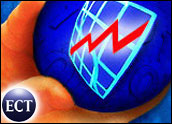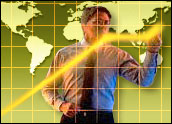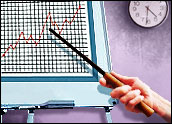
The current recession and the steep decline in the construction and sales of new homes are forcing dealers and installers to reevaluate their current product offerings. Average 2008 revenues were down almost 11 percent from 2007, and dealers are actively looking for new avenues to expand their business and make up for the shortfall in 2009.
For one, many dealers are hoping to compensate for the drop in new-home construction by moving more of their business into MDUs (multi-dwelling units) and existing homes, and as a result, 2008 marked the first year that retrofit jobs accounted for a clear majority of residential sales among installers. In 2009, sales through existing homes will account for almost two-thirds of all dealer revenues through the residential market.
New Technologies
Naturally, dealers are looking for new types of solutions that will better serve them in this retrofit space. In general, it is not an option to smash holes in walls and run miles of new cables in an existing structure, especially one with multiple units and tenants. With consumers spending less money overall, they would find such an approach cost-prohibitive even if they were willing to tolerate the intrusion.
Dealers need to give their customers better options, so they have steadily increased their expertise in a variety of wireless, powerline, and IP (Internet protocol) technologies. The trends are unmistakable — knowledge of these technologies is quickly becoming a business requirement.
Already, over one-half of all U.S. dealers have high familiarity with Bluetooth and WiFi (based on 802.11n), not surprising given the long market tenure and brand-building efforts behind these technologies (which paid the most dividends from 1Q 2007 to 1Q 2008).
What is more telling is the rise in awareness of other technologies in this space. Over 40 percent of U.S. dealers indicate high levels of familiarity with ZigBee, compared to only 28 percent in the first quarter of 2008. Twenty-seven percent of U.S. dealers report high familiarity with Z-Wave, up from 18 percent in 1Q 2008, while familiarity with INSTEON and HomePlug C&C doubled over that same time period (although they started with a low base, and even now, only one in eight integrators rated their familiarity with these technologies as high).
Even the lower-scoring solutions — WirelessHD, UPB, and Powerline HD — had an increase in their awareness scores among dealers. All these solutions enable control or A/V distribution, which is the hallmark of today’s home systems, and they allow dealers to add these capabilities in retrofit jobs in a (relatively) cost-effective, nonintrusive way.
Slow to Start Selling
This awareness has not yet had a huge impact on the actual products dealers are offering. While there are camps on both sides — enthusiasts and Luddites — the majority of dealers are in the middle, waiting for complete products to hit the market that have demonstrable benefits to their businesses (e.g., proven compatibility, ease in installation). As many of these technologies are still in the early stages of standardization and product development — or have not achieved a satisfactory level of awareness among U.S. dealers — dealers have been slow to add these solutions to their catalogs in any large numbers.
These circumstances will change, though, as more dealers will seek out knowledge about these solutions and then communicate the benefits to their customers, which will ultimately push up the number of wireless- and powerline-enabled installations. For example, Parks Associates forecasts the number of wireless-enabled control installations for energy applications will grow by 14 times from 2008 to 2012, from a little more than 100,000 to over 1.6 million.
For the current market, the factor having the most impact on dealer offerings today is consumer demand for entertainment. Should we dust off the old industry term “cocooning” to explain these changes? It does seem appropriate as consumers are looking for ways to save costs by staying home, but they still want to have multiple, high-end entertainment options. Right now, 78 percent of dealers sell media servers, up from 66 percent two years ago, and these products are rapidly replacing DVD/CD jukeboxes. Furthermore, the product trend is going from audio-only models to multifunctional models that feature both audio and video. Currently, 40 percent of servers sold by dealers in the U.S. are audio-only. In 2005, audio-only servers accounted for 75 percent of sales.
From 2007 to 2008, the average end-user cost of the audio-only server dipped from over $4,000 to under $3,000. At the same time, the average cost of a video server stayed consistent, well above $9,000 (it actually increased a few dollars from 2007 to 2008). Dealers like that kind of price stability and are strongly behind this product category, with the number of installs projected to go up substantially in 2009 to meet the entertainment demands of their customers. These products will remain a staple of dealer offerings for some time to come, the only question being which brand(s) will emerge as the market leaders. Right now, U.S. dealers cite over 40 different brands when asked to list their “top three” brands sold. With a market that varied, there is plenty of room for brands to move up (and down) the list of preferred products.
Bill Ablondi is the director of home systems research at Parks Associates.















































Social Media
See all Social Media